Anyone who claims all Mustangs are as common as belly buttons has clearly never heard about the Boss 429 or met Colin Macbeth!
Words: NZV8 Photos: Strong Style Photo

Yawn … just another Mustang … yeah yeah, we’ve heard it all before, but as much as we’ve also been guilty of getting a jab or two in, we can assure you this is anything but another belly-button Mustang.
In the pony car world, there are a number of Mustangs that hold a higher value, both metaphorically and financially, than others. For example, K-code GTs, Shelby GT350s, or the iconic Boss 302. But, at the absolute pinnacle of classic Mustangs, sits the Boss 429, a car that’s so exclusive and so rare that it’s not even on the radar of most classic car aficionados.
Henry Ford himself had a motto of: build what you race and race what you build; Waikato’s Colin Macbeth follows that same philosophy. It’s a philosophy that’s seen him own and race a number of interesting cars over the years, but he’s always had his heart set on owning the ultimate: a 1970 Boss 429.
“I have always been a petrolhead,” says Colin. “It must run in the family — my grandfather raced motorbikes and opened Jutland Motors in Taumarunui, which many years later became a Ford franchise, and my father was a motor engineer and owned a Hudson Terraplane coupe. I’ve also passed the bug on to my son,” Colin says.
“I seem to have owned every make of car, including some very special ones that I wish I had left in the garage — one being a genuine 1971 Falcon GTHO Phase 3 and the other a 1974 Ferrari 365 Berlinetta Boxer. I have always been a Ford fan, starting in my younger days with a Mark I Zephyr when Mark I Zephyrs were just the thing to own.”
While his statement about owning a lot of cool cars is certainly true, Colin didn’t mention a few other interesting cars he’s had, such as a ’70 Falcon GT, a ’71 Falcon GT, and, of course, the ultimate of Falcons, the Phase 3 GTHO, plus Rod Coppins’ famous Zephyr Corvette with the exhausts sticking out through the bonnet. Following these he had a few later Falcon GT-Ps, a Jensen Interceptor, a Corvette, a Mercedes C63S, a Lamborghini Murcielago, a Gallardo Super Trofeo, a Ferrari 308, a 365 Boxer, a VK Brock Commodore, and many more not so memorable.
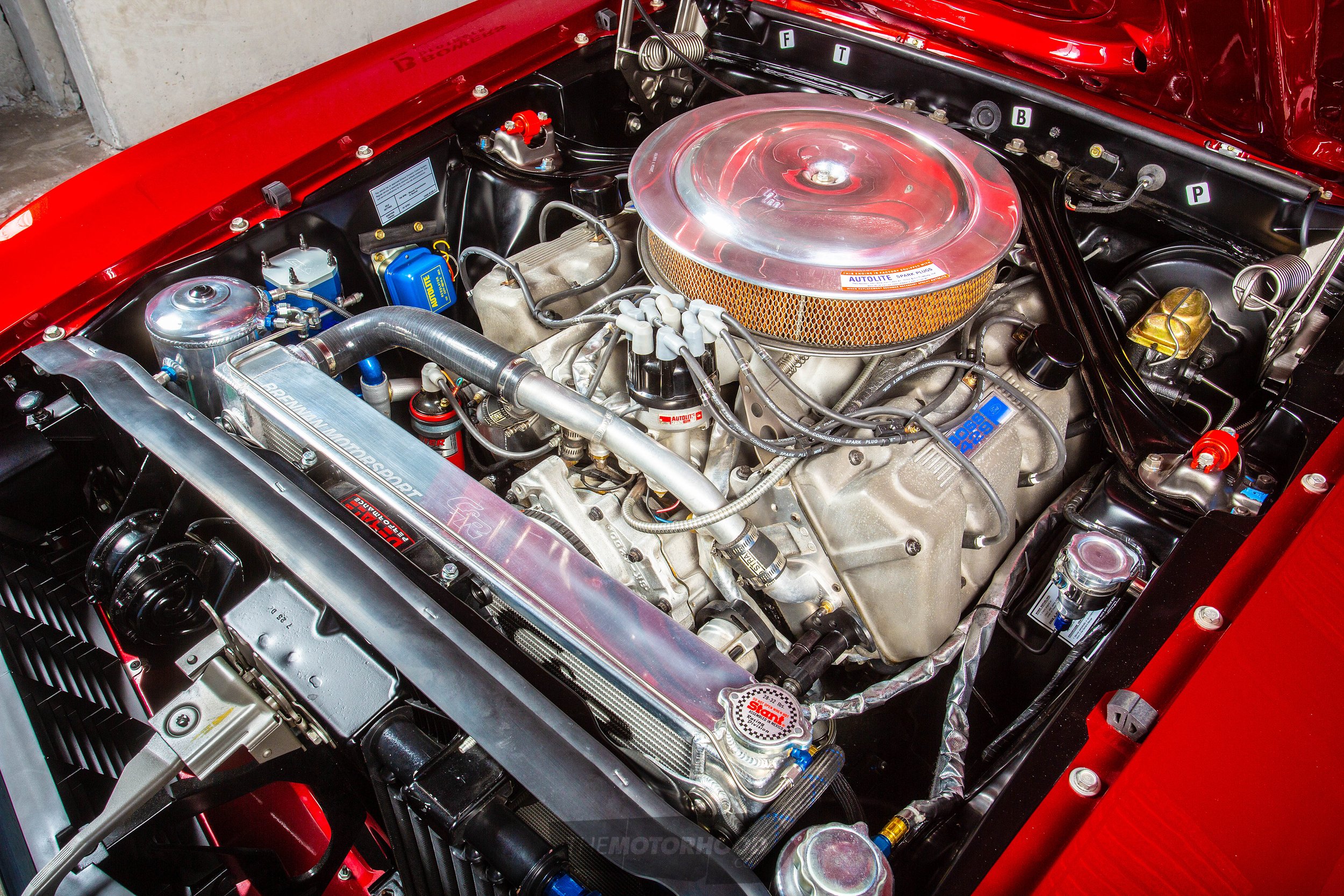
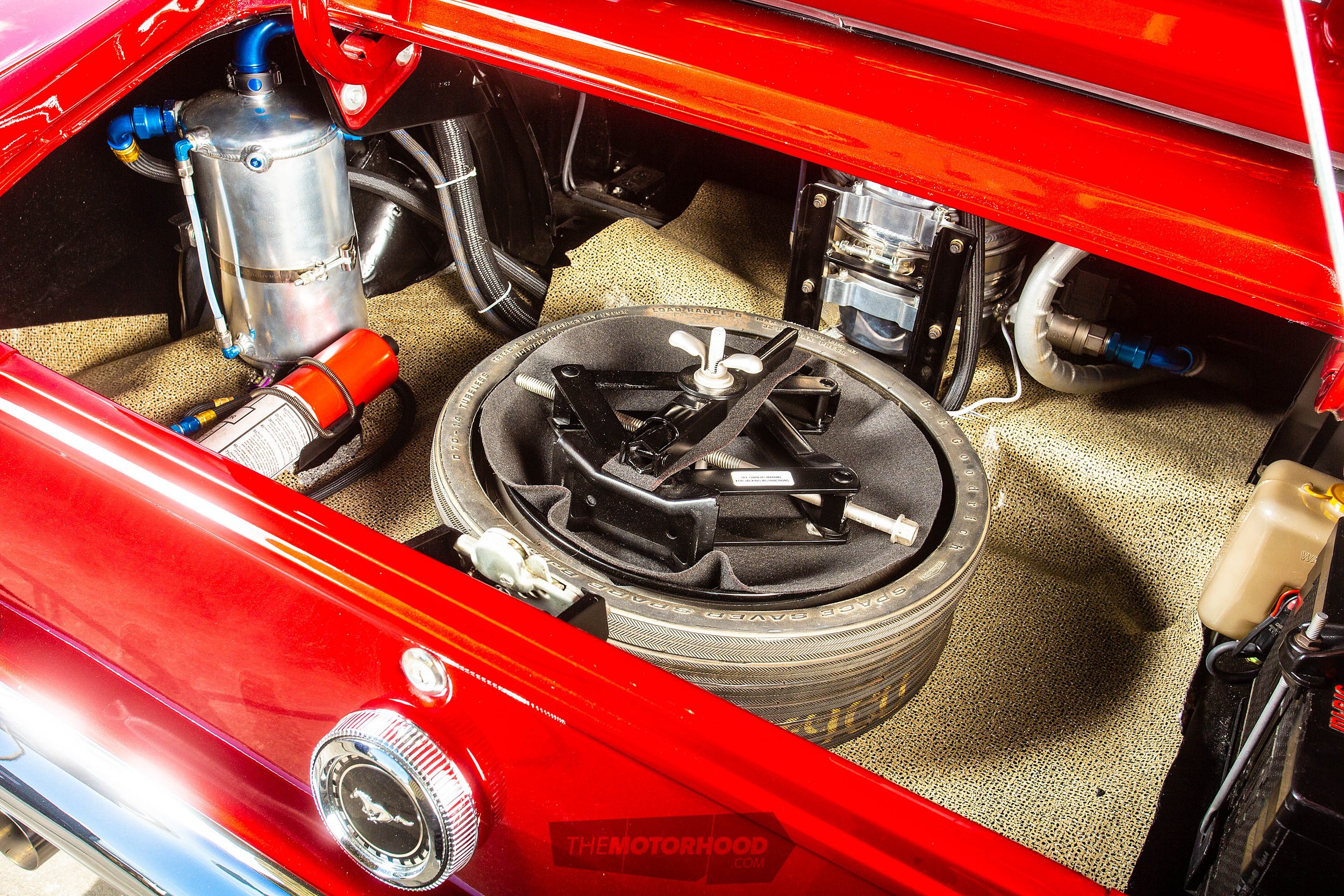
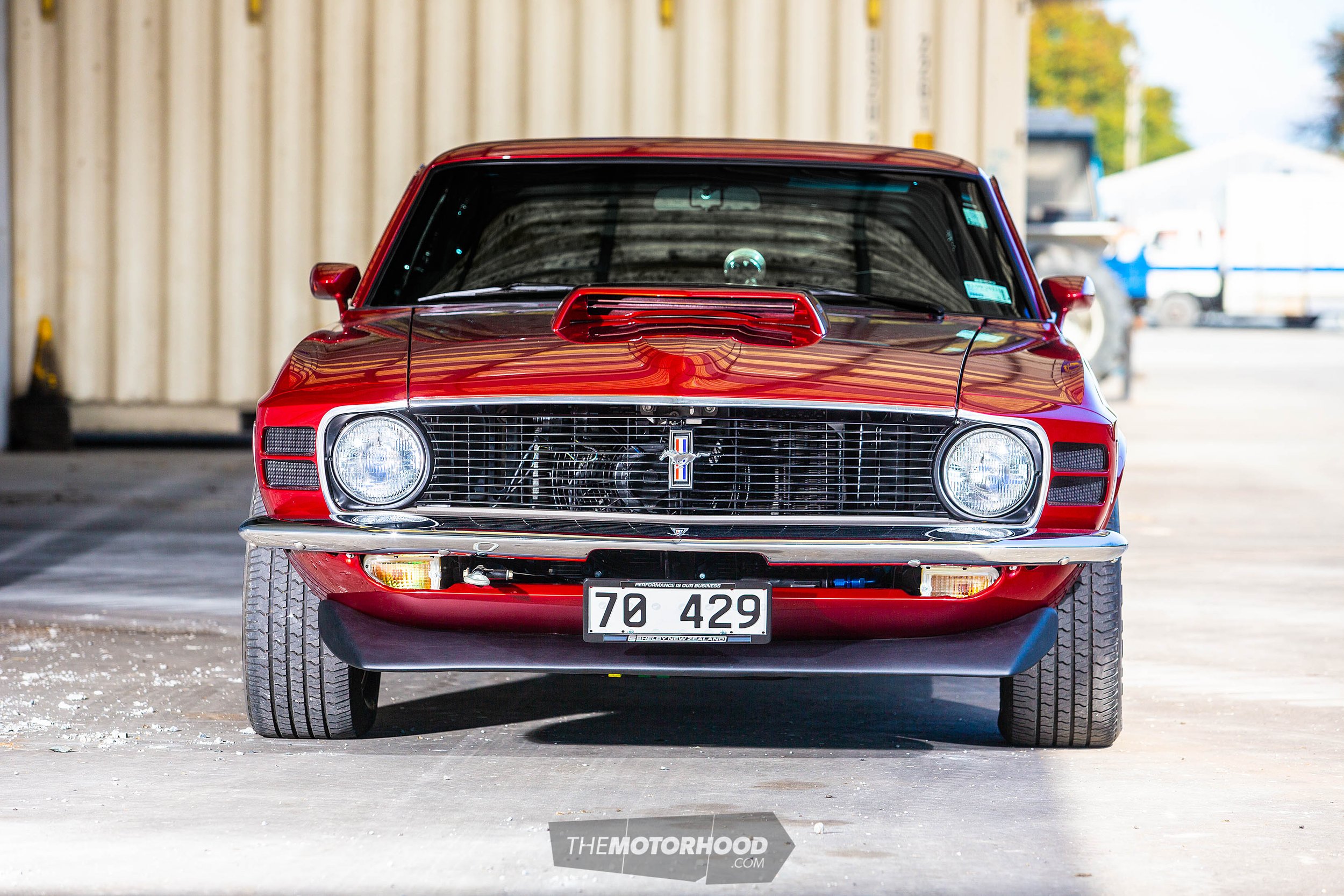
However, the elusive Boss 429 sat at the top of Colin’s wish list. Owning one is a dream easier said than done, though; with production numbers limited to just 499 of the ‘standard’ Boss 429 and even fewer of the factory race-built variants, they’re not exactly a commonly traded item.
What Colin did have, though, was a 1970 Mustang he’d purchased back in 2012 that held a bit of Boss DNA.
“The car looked great on eBay. It had just gone through a restoration and was fitted with a 429ci Boss engine, but was not built entirely from original components as they’d used plenty of aftermarket parts,”he explains.
Like many American restorations, the overall quality left a lot to be desired, so, rather than tolerate it, Colin decided to plan out a nut and bolt concourse-level restoration. As part of that journey, every single aspect of the car would be changed to replicate a genuine Boss 429. While that may sound simple, the difficulty lay in that Colin was determined to use only genuine factory-offered race parts, most of which are unobtainable to even the most diehard of fans, let alone ones on the wrong side of the globe.
When asked about the engine, which is undoubtedly the crowning glory of the car, Colin states, “It took me over four years to find all the original new old stock parts from numerous sources, including Holman Moody, various Ford forums, and eBay amongst others.”
The result of that relentless search is a motor that’s almost a perfect replica of the engine used by the Boss 429 Mustang and Torino Talladega in Nascar. For drivability’s sake the camshaft profile was dialled back a bit, meaning it is happy to take on New Zealand traffic.

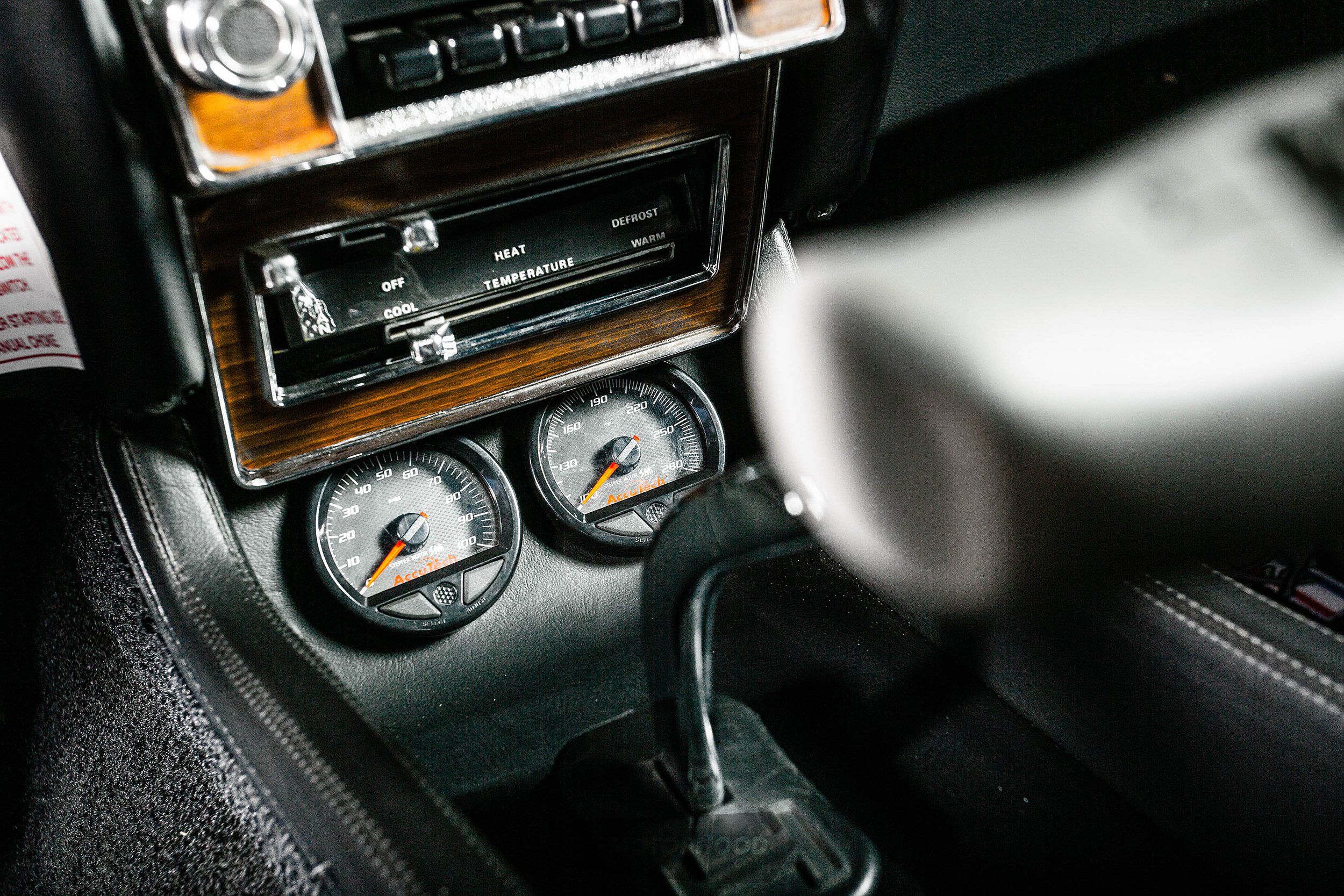
While the street 429s are certainly nothing to be sneezed at, thanks in part to their Hemi-headed design, the factory race engines are a whole different ball game. Rather than our trying to explain it, we’ll offer Colin’s far more experienced opinion.
“The key components in my engine include a special Nascar engine block that is stronger, with a higher nickel content, and is designated with an ‘R’ for race stamped in the valley. The engine includes such components as a Nascar-specific crankshaft, Nascar pistons and rod combination, Nascar ported full Hemi valve train heads with 2.3-inch intake valves, Nascar rocker arms, massive intake ports — which a tennis ball will almost fit into — Spyder race intake manifold, 1150cfm carburettor, Nascar aluminium water pump, and a complicated dual gear oil pump / dry sump system with the Nascar oil tank and breather overflow tanks in the boot.”
That’s not exactly your average Mustang motor. In fact, it would be fair to guess that for the value of that motor you could buy more than a few average ‘belly-button variety’ Mustangs. Clearly, such a special piece needs to be put together by an engine builder with enough knowledge and experience to do it justice, which is why Colin chose Brennan Motorsport in Tauranga for the job. There, the naturally aspirated race engine was fully balanced, blueprinted, and tuned, putting out a healthy 707bhp; while the race-cam would have undoubtedly seen it hit over 800hp, 707 was deemed plenty.
As with the camshaft selection, a few originality compromises were made in the name of drivability, including a Tilton twin plate hydraulic clutch, twin three-inch stainless-steel exhaust with AdrenalineR mufflers, and a C&R aluminium radiator.
With so much effort going into the motor, Colin knew the same care and attention were required for the body. For this, there was only ever one place he was going to turn: Matamata Panelworks.
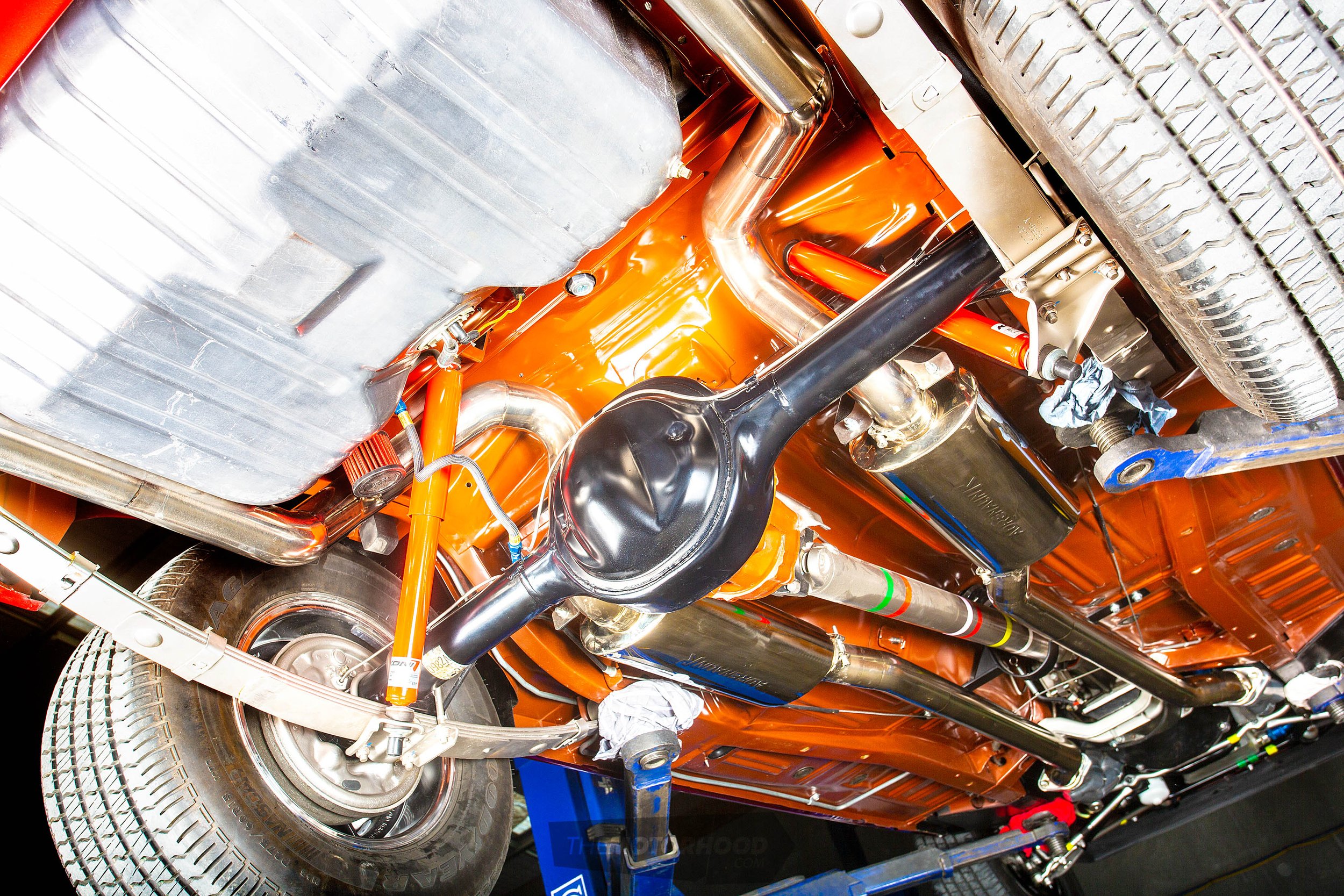
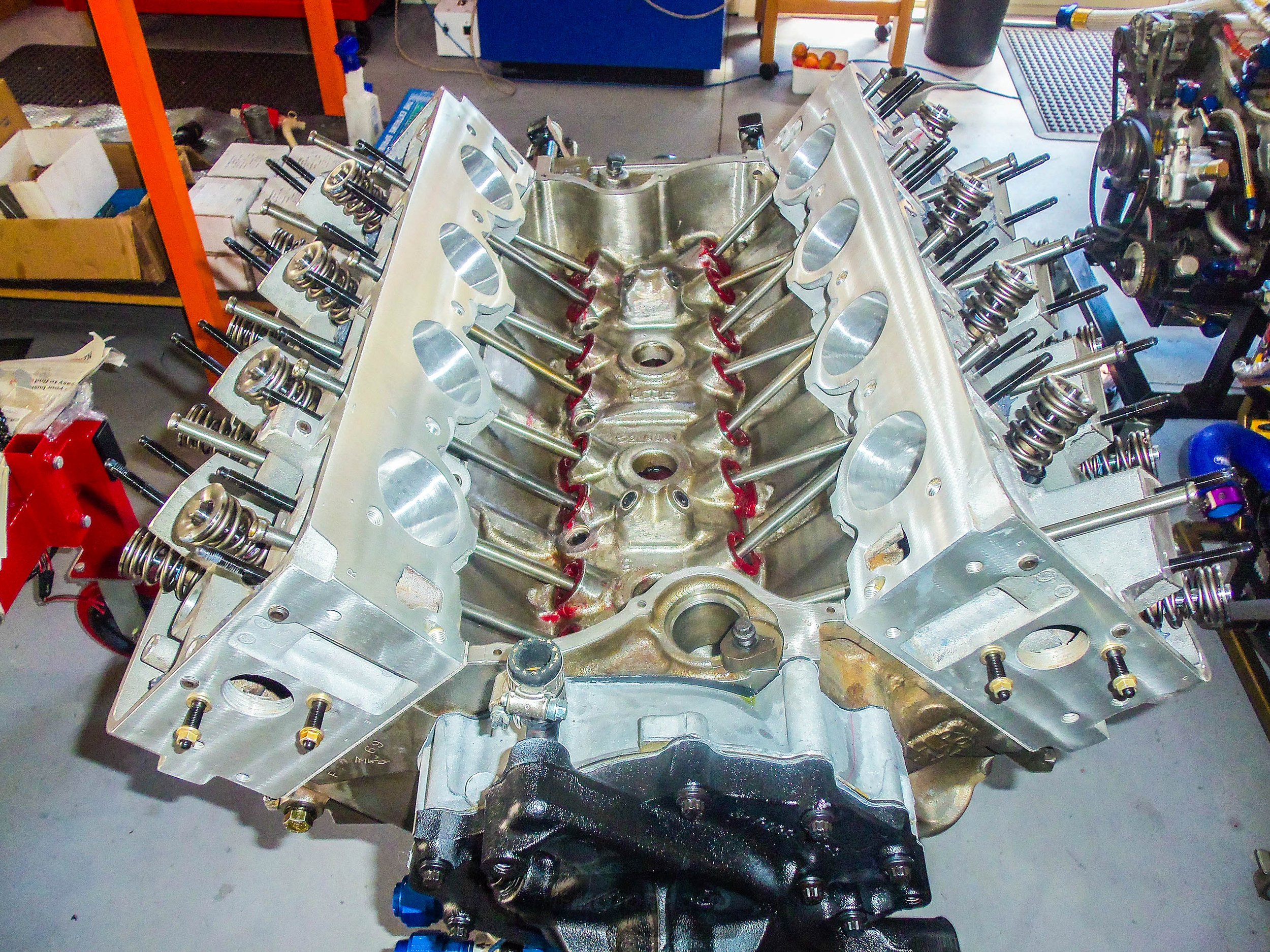
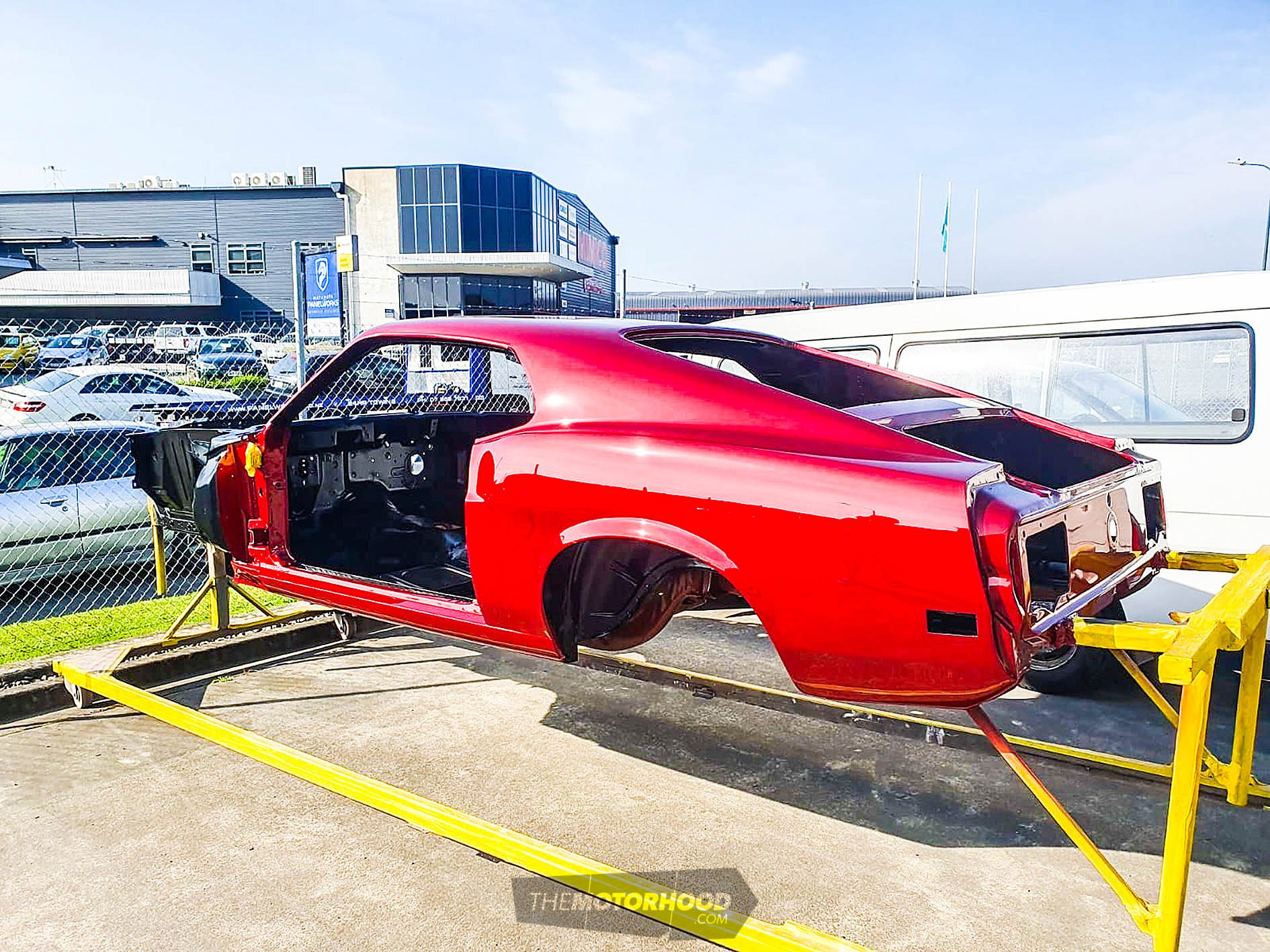
Although the body had been restored previously, the work performed in the last rebuild pales in comparison with the work that the Matamata team have put into it, beginning with stripping the whole thing to bare metal before rebuilding it with meticulous attention to detail.
The plan throughout the 18-month body rebuild was to pay tribute to the genuine Boss 429s. This meant sourcing some new panels, such as the genuine, brand-new, unused Boss 429 bonnet and scoop, which had been sitting on someone’s rafters in the USA for many decades. According to Matamata Panelworks’ Malcolm Sankey, “The car was in reasonable shape; there were just lots of small things done badly. Acid-dipping the shell not only enabled us to see the bodywork that had been done in the US, but also gave us a blank canvas to work on.”
As can often be expected with a car of this age, there were various patch panels.
“These [patch panels] were half-joined patches that weren’t up to NZ specification, and certainly not up to our standards,” says Malcolm.
Of course, righting wrongs of that type is all in a day’s work for the Matamata crew, and before long they had the shell looking better than ever. It could then be moved across to the in-house paint shop to receive a stunning three-layer Candy Liquid Red paint scheme as used on the latest Ford GT models.
With the shell sorted, it came time to bring the interior up to the same level.
“We removed and refurbished most of the interior. There were some areas that needed to be tidied up and Colin was able to procure many OEM original parts, including an original Boss 429 Nascar cable drive distributor and tacho that was used by a race team,” Malcolm tells us. “It’s true credit to Colin that he was able to track down as many original parts as he did.”
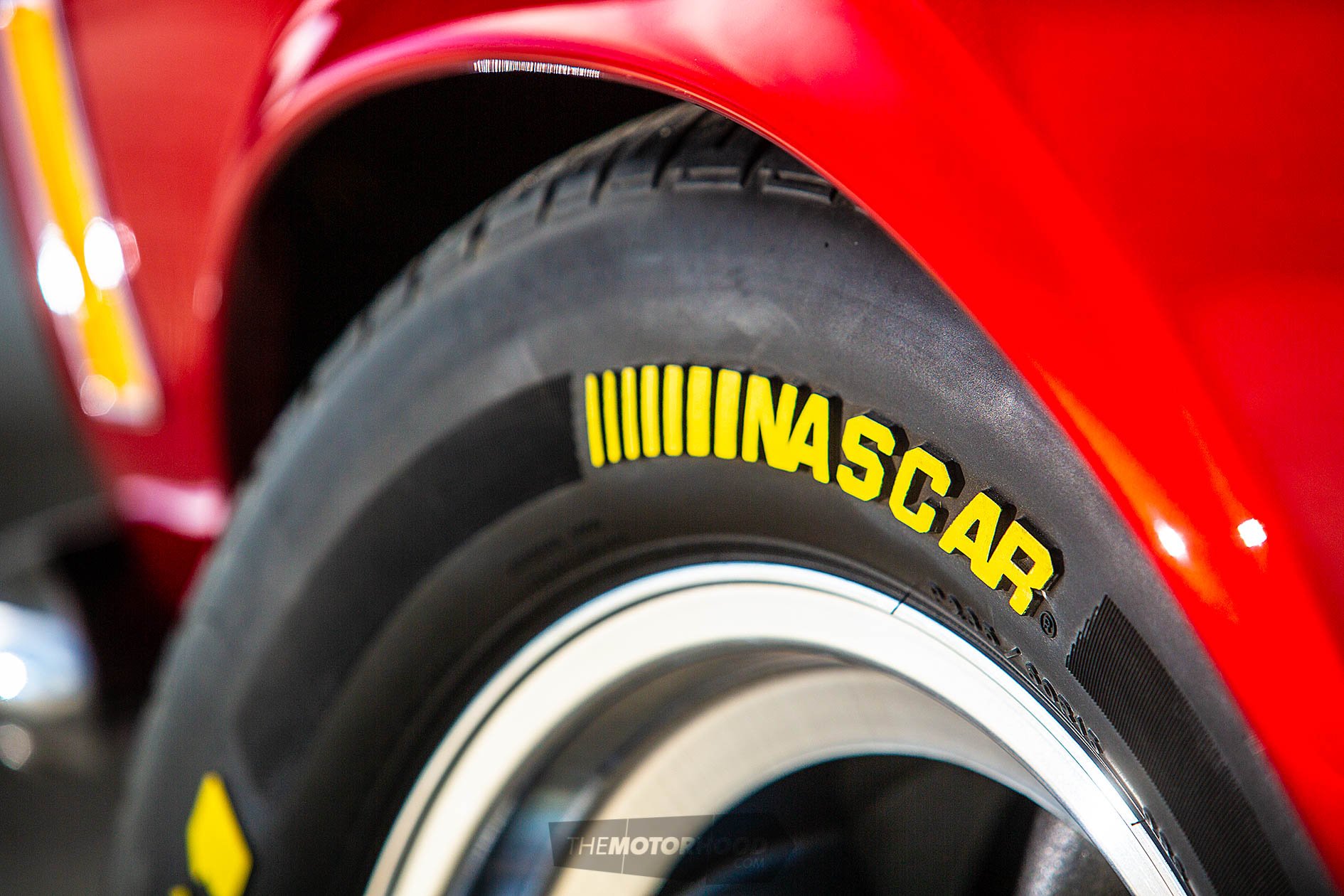
Despite being in reasonable shape, the suspension and brakes were given a once-over before being reinstalled, the suspension receiving a 1.5-inch ‘Shelby drop’ in the process. The finishing touch was to bolt on the restored American Racing wheels shod with genuine — read unattainable — Goodyear Eagle Nascar tyres.
“I would not have been able to source the rare parts like these without the help of my wife, Delcie, as I am a bit of a caveman and technology left me behind,” Colin explains.
Luckily, as difficult and sometimes painfully expensive as the process was, finding all the parts proved to be a worthy quest, and the result is something worth all the heartache.
“I am exceptionally happy with the way the Mustang turned out and having built it my way. This certainly is the last car I will build, and it will be kept in the family for many years,” Colin tells us — and that’s not something that can be said for your average garden-variety, belly-button car.

This article originally appeared in NZV8 issue No. 199




